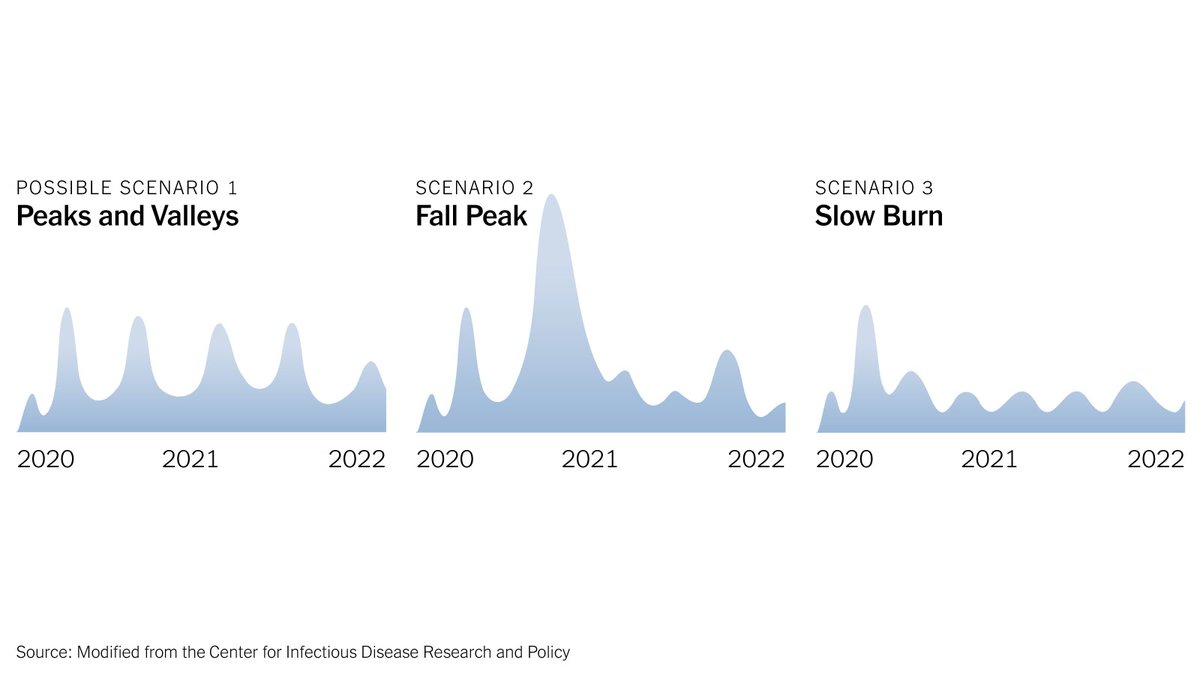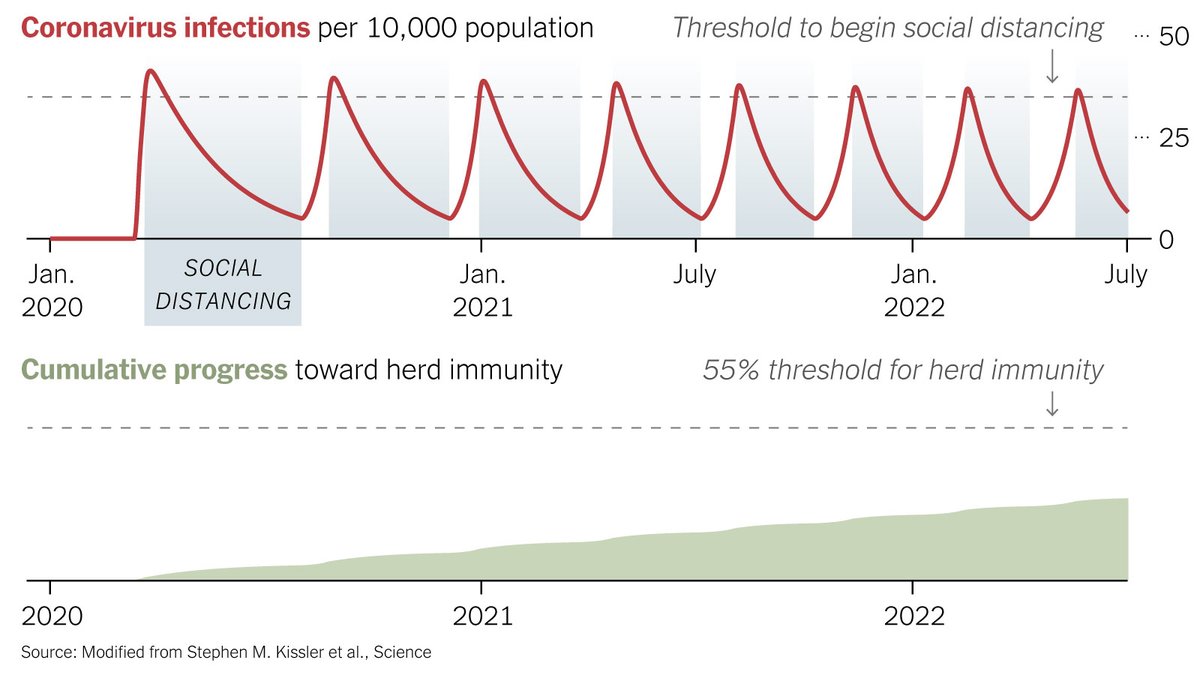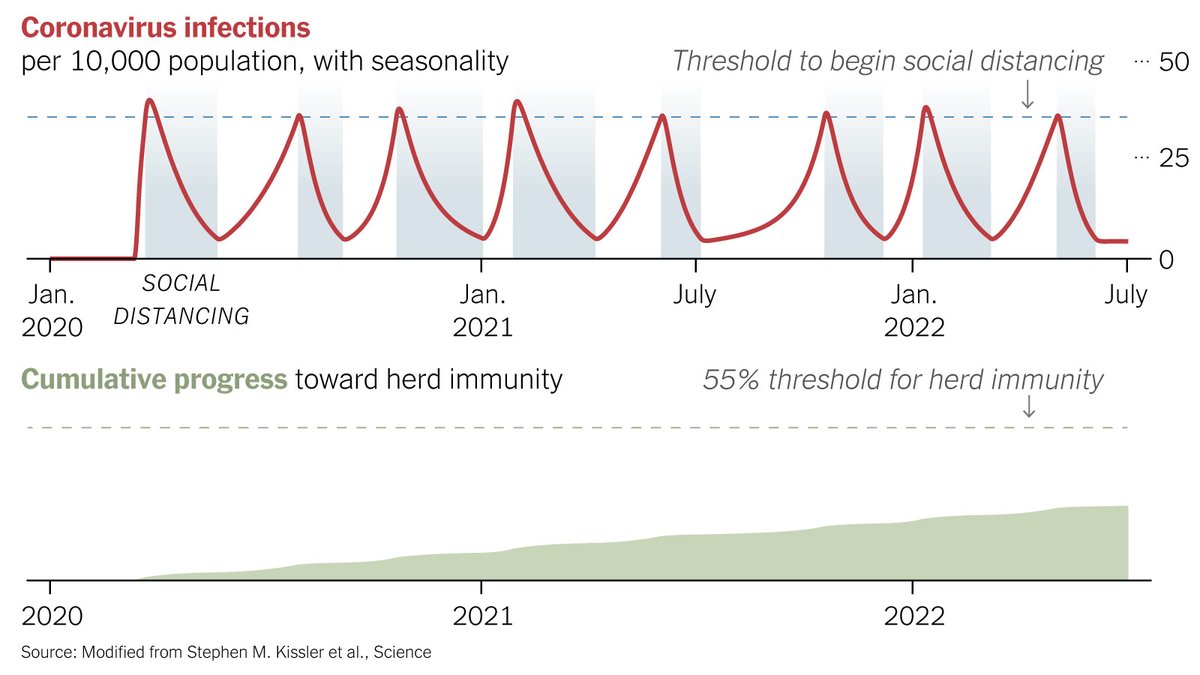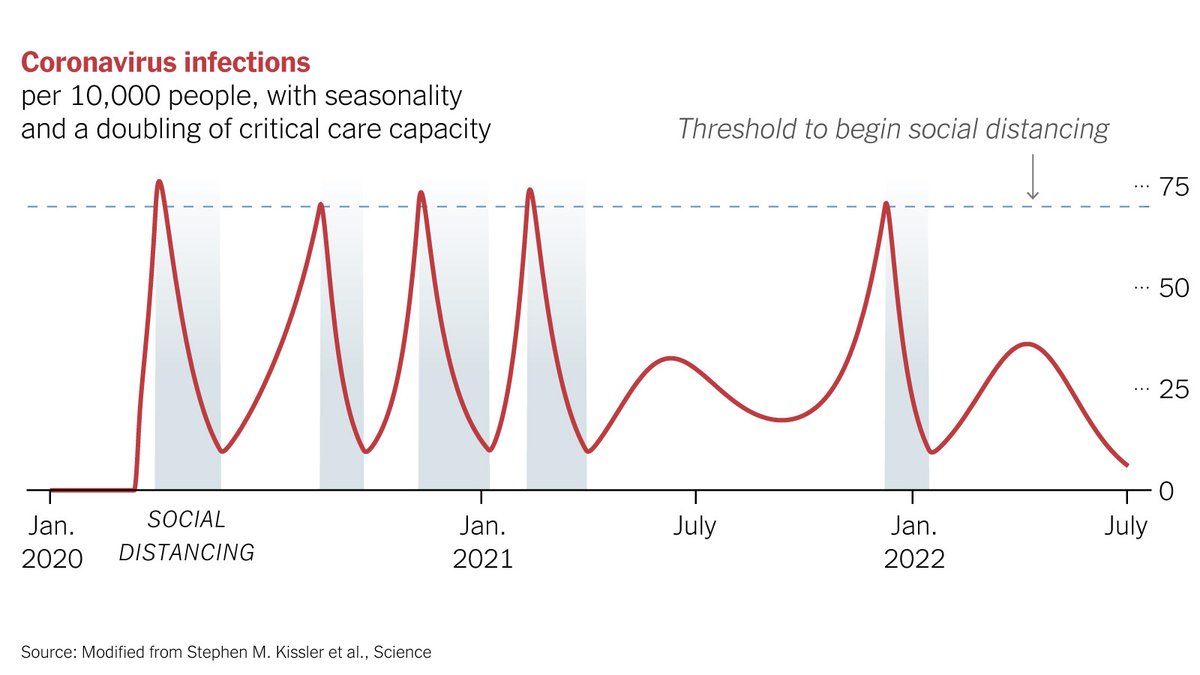The coronavirus will be with us for the foreseeable future. “Exactly how long,” one epidemiologist said, “remains to be seen.” Here’s what two recent analyses say about the shape the pandemic might take in the coming months. https://nyti.ms/2Lcyr4y ">https://nyti.ms/2Lcyr4y&q...
An analysis from the University of Minnesota describes three possible scenarios for the future of the pandemic. http://nyti.ms/2Lcyr4y ">https://nyti.ms/2Lcyr4y&q...
Another analysis from Harvard’s Chan School examines intermittent social distancing — turned “on” when Covid-19 cases reach a certain prevalence in the population, and “off” when prevalence drops. http://nyti.ms/2Lcyr4y ">https://nyti.ms/2Lcyr4y&q...
Seasonal effects could slow the spread of the virus in warmer months, but this year the effect will likely be minimal because many people are still susceptible. http://nyti.ms/2Lcyr4y ">https://nyti.ms/2Lcyr4y&q...
Doubling hospital critical-care capacity could allow even longer breaks between periods of social distancing. http://nyti.ms/2Lcyr4y ">https://nyti.ms/2Lcyr4y&q...
What’s clear: A one-time social distancing effort won’t be sufficient to control the coronavirus, and it will take a long time to reach herd immunity. Without an effective vaccine, our pandemic state of mind may persist well into 2021 or 2022. http://nyti.ms/2Lcyr4y ">https://nyti.ms/2Lcyr4y&q...
“We anticipated a prolonged period of social distancing would be necessary,” said one researcher, “but didn’t initially realize that it could be this long.” http://nyti.ms/2Lcyr4y ">https://nyti.ms/2Lcyr4y&q...

 Read on Twitter
Read on Twitter






